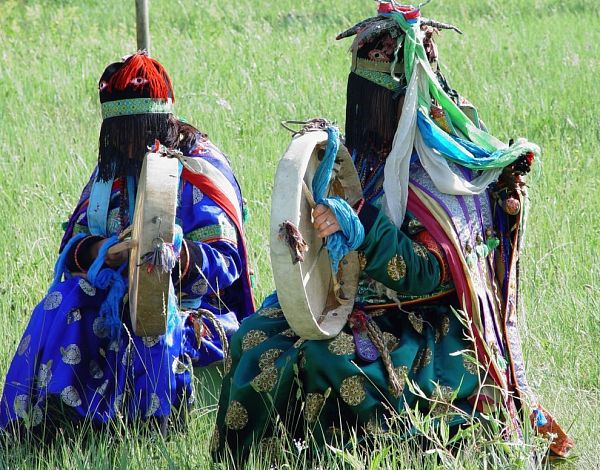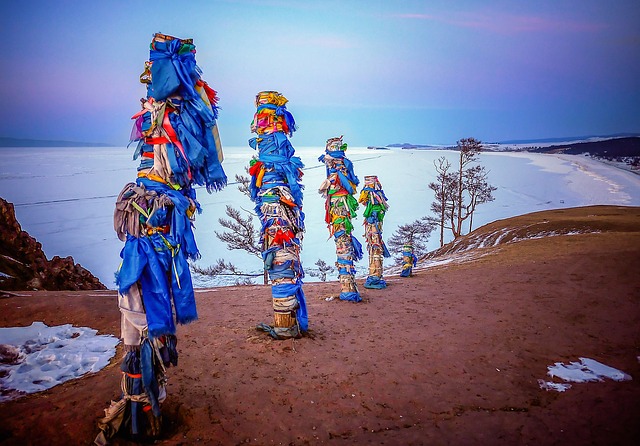A revival of shamanism and its rituals gives visitors a chance to look deep into the best, understand the present, or even imagine the future...
Shaman is the special and most important figure. Shamanic attire and ornaments were symbolic. The shaman's military cloak - orghoi - differed from an ordinary robe in that various decorations were hung on it-brushes of animal skins, metal pendants in the form of human figures, horses, birds, bells, mugs. The head of the shaman was crowned with a sacred headdress - a crown with pommels in the form of branched horns.

The garment was crowned with conical tubules of the hilly, chains, plates. Required attributes of the shaman were a cane, a whip, a tambourine and a beater, a mirror (toil) made of bronze or jade, a knife. The cane helped the shaman to move into the other world, speak with spirits. The shaman was a priest, a doctor and a fortuneteller. The shaman was the central figure in mysterious Tailagans - prayers - requests from spirits-(Ejins) crops, the multiplication of livestock, lucky hunting, and family happiness.

Currently, six shaman organizations are registered by the Ministry of Justice in Buryatia. Shaman mysteries are held in sacred places,and there are quite a few of them. Special installations – Oboo,- are made on these places.

Modern shamans, like their ancestors, conduct prayer services to strengthen the physical and moral health of people, help solve problems, predict, pray for the welfare of Buryatia and Baikal, call for good, good weather, promote people's unity and harmonization of their relations with nature and the world.
In their everyday life shamans are engaged in ordinary affairs, develop contacts with their counterparts from other countries, but at the same time faithfully fulfill their basic role in society, as prescribed by the doctrine and the tribal root - to serve as intermediaries between the world of people and the world of spirits.
